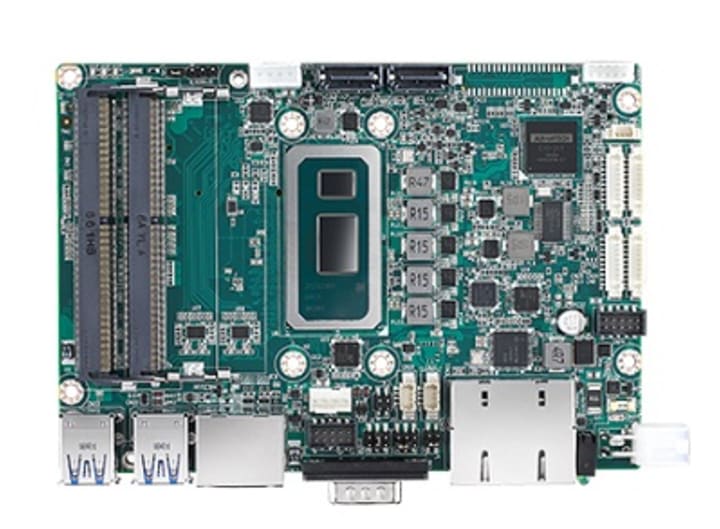nilayshrugged
on 27 December 2019
This is why smart displays run Ubuntu Core
First impressions count, and making sure your users can see and interact with your product in a seamless way, means selecting the right smart display technology. Read on to find out what hardware features are needed to make a reliable smart display, and why smart displays run Ubuntu Core.
Medical imaging to smart displays: There’s a port for that
Earlier in December, our team was at the Advantech Partner Conference, where the recently released Advantech MIO-5373, was running Ubuntu Core. This device has the two main components any smart display needs: 1) The right ports to connect to screens and 2) compute to make sure screens look pretty. Let’s take a look at it’s cross section:

This board can achieve 4K HD at 60 frames-per-second due to the eDP 1.4 port. Generally, industrial users are expecting 4K HD as a sign that a device is future proof. Specifically, this is essential for mission-critical use-cases, where real time data needs to be displayed and acted on. In either case, the MIO-5373 eDP 1.4 port has you covered.
If screen compatibility is essential, the eDP port is multiplexed with an LVDS port, which has better compatibility with older LCD displays. Further, there are DisplayPort and HDMI ports, and this ensures any screen made in the past 20 years can connect to the MIO-5373.

Where this device really impresses, though, is its 8th Generation Intel Processor and option for up to 32GB of RAM. With this level of compute, users can power three dynamic and high definition displays while maintaining reliability and image quality. For example, if user interaction needs to be gathered, e.g. from a touch screen, processed internally, and then results displayed on another, larger, monitor this board is a winner.
Why Advantech smart displays run Ubuntu Core
Catching up with Aaron Su, EIOT AVP at Advantech, at the Partner Conference, he said:
“The MIO-5373 integrates Ubuntu Core and snaps, which provides a ready to use Linux operating system for embedded customers. It reduces the burden for customer when building up an embedded Linux operating system, and allows customers to focus more on their application software development. In addition, Ubuntu and the snap Community provide a series of free Smart Display apps for customer’s. With various industry standard apps, it decreases the time to market of customers’ IoT applications, and gain market opportunities”
Let’s dig deeper into the apps on Ubuntu Core and how a reliable OS will shape your user experience.
Making sure there’s a snap for that
When you try and make everyone happy, no one is happy. If the operating system on your device only fully supports apps for a fraction of use-cases, sales will suffer, integration gets harder, and user-friction builds up.
By running Ubuntu Core, smart displays have access to the extensive snapcraft.io software store, where customers can harness our community powered apps. These apps, called snaps, are secure and easy-to-update, and include free apps for digital signage and smart displays. If customers want to write proprietary software, Canonical has a suite of products that makes building an IoT ecosystem easier than ever.
Why your Smart display should run Ubuntu Core
If the operating system is not reliable in all users applications, updates choke the network. Security flaws are slow to be patched and users start to find workarounds. Then, security holes appear and devices start to make headlines for all the wrong reasons.
Ubuntu Core brings industrial stability and security to IoT. It takes all of Canonical and Ubuntu’s expertise from 15 years of operating system development and puts it into a light, IoT friendly model. Users benefit from 5 free years of kernel and OS updates, with the option to extend to 10 years. Further, Ubuntu Core is built with security at its heart, with strictly confined system architecture that ensures device managers have full control of what affects their device.
Summary
Advantech made a full-featured and powerful board that caters for cross-industry smart display use-cases. By partnering with Ubuntu, and having their smart displays run Ubuntu Core, users of this board get access to applications that match their business ideas, and a stable OS they can rely on.
Are you planning a smart display product? Your next steps should be to read our white-papers on building an IoT ecosystem and using open source smart display apps. They are a must read whether you’re a device manufacturer entering the lucrative smart display market, or a screen owner who wants to provide the best customer experience.
Then, contact us so we can partner with you, every step of the way.



